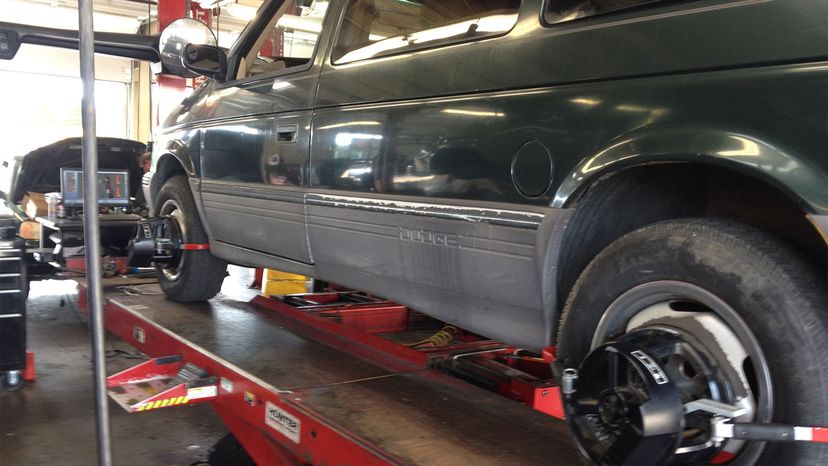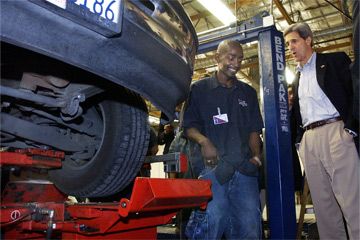
A wheel alignment consists of adjusting the angles of the wheels so that they are parallel to each other and perpendicular to the ground. This maximizes the life of your tires and ensures straight driving on the road. If your front end is not aligned, you may find your car veering to the right or left.
Aligning the front end is a matter of adjusting the caster, camber and toe. The caster is the forward or backward tilt of the steering axis when viewed from the side. The camber is the tilt of your wheels when viewed from the front or the back. The toe is how much the front of your wheels are inward or outward (toe-in/toe-out) when viewed from the top [source: Grassroots Motorsports].
Advertisement
If your car is front-wheel drive, as the majority of cars are today, a front-end alignment will help with any pulling or unevenness you feel in the steering. But many cars, especially SUVs of any size, have all-wheel drive. These need to be aligned front and back at the same time, which is usually best left to the professionals. [source: Auto Quarterly]
No matter what kind of car you have, it's best to have a proper wheel alignment done by a professional car mechanic. However with the right tools, you can attempt to do it yourself on a front-wheel drive car. Here's how:
- Raise both front wheels on jack stands.
- Turn the car's electrical system on but not the engine so that the steering wheel will move. This is sometimes labeled "accessory" on the ignition.
- Look at one wheel at a time from the front of the car. Check to see which direction it's pointing. If it's pointing in toward the center of the car, it means that the outer tire rod has to be tightened. If it's pointing outward, the tire rod has to be loosened.
- Loosen the nut that connects the outer and the inner tire rods. This will allow you to loosen or tighten the tire rod.
- The outer tire rod must be turned counterclockwise or loosened if the wheel has to be turned more inward. If it has to be turned more outward, the tire rod should be turned clockwise or tightened.
- Turn the wheel straight after you've made the adjustment, and check if the wheel is still tilting the wrong way. If that wheel is straight, repeat the procedure with the other wheel.
Take the car for a test ride to make sure it drives straight.
Advertisement


